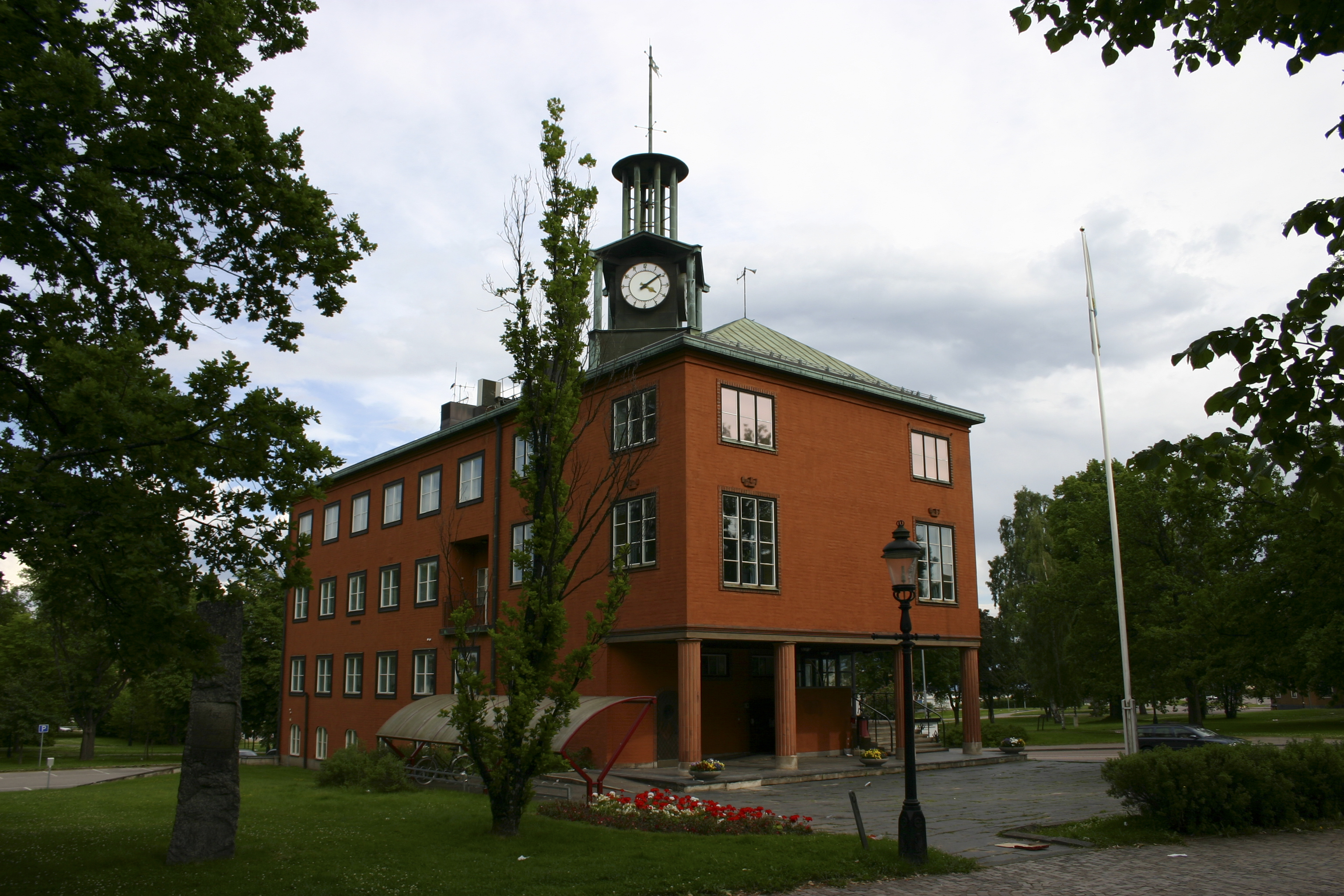- Ludvika Town Hall
Infobox Historic building

caption=The town hall in Ludvika, seen from the west
name=Ludvika Town Hall
location_town=Ludvika
location_country=Sweden
architect=Cyrillus Johansson
client=City of Ludvika
engineer=
construction_start_date=1936
completion_date=1938
style=Brick Expressionism |Ludvika Town Hall (Swedish: "Ludvika stadshus") is the official Municipal Council building for the City of
Ludvika inDalarna County ,Sweden . Situated centrally, the town hall is found in the corner of Bangatan andDan Andersson s gata, oppositeLudvika Ulrica , the church. The town hall was designed in 1934 by architectCyrillus Johansson , (city architect 1931-1941), with construction commencing in 1936. The building was completed in 1938 and remains in use as town hall to this day. Due to the small size of the building, the Municipal Council no longer convenes its meetings in the building but uses the local Peoples' House (Swedish: "Folkets Hus") instead.Exterior
A student of
National Romanticism architecture, Cyrillus Johansson applied a restrained form ofBrick Expressionism , to his town hall design - one of three official buildings he designed for themunicipality . The west facing tetrastyle portico is in fact afolly with the entrance off-set to the south-facing west corner. Sculptured in brick above each of the first floor windows aremural crown s proclaiming the then City's Royal Charter (1919-1971). The building compromises of four floors with a squareclock tower rising centre above the ridgedverdigris copper roof. Giving the four columns of the portico a closer scrutiny will reveal a dog pattern in the tiled medallions - these were made by the builders in honour of their mascot, a stray they called Stella, who also stands immortalised as a statue in the town hall garden. The forecourt, located by the west gavel, is layered with large slate tiles on a bed of gravel long over-grown with grass.Clock Tower
As the middle section of the clock tower, where the dials are, is narrower than the base on which it stands and it's roof above, the tower's square ridged copper roof has four overhanging eaves, each of which are supported by an exposed,
exoskeleton copper column resting on the tower's square base. On top of the clock's roof stands the open-to-airbell tower surrounded by a circle of eight copper pillars and a single bell hangs within. The bell tower is crowned with a circular copper roof upon which a copper spire rises with a dragon-head weather wane, also in copper. Theturret clock (mechanism) was manufactured byLinderoths Urverk (Stockholm ) in 1937 and installed in 1938. All four dials and the bell were driven from the same mechanism. In 1976, the town council appointed localwatchmaker Karl-Arne Carlsson fromGrängesberg as the town's first officialTimekeeper , responsible for maintaining the Town Hall Clock. In late 2004 the mechanical turret clock was retired together with its keeper, and replaced with a self-maintaining digital timepiece controlling five independent electrical mechanisms, one for each dial and the bell.
Wikimedia Foundation. 2010.
